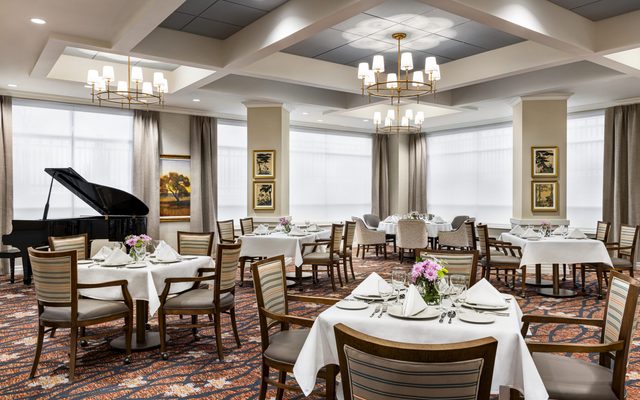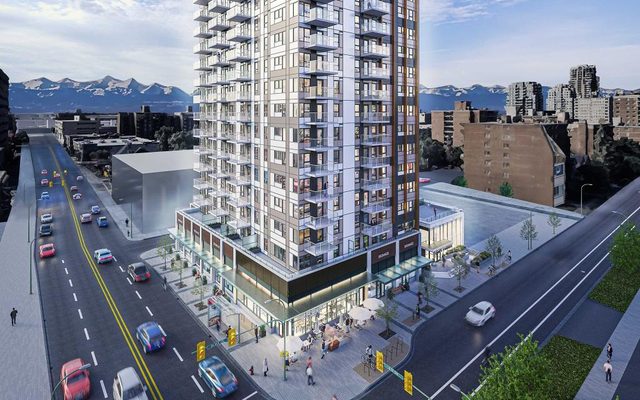Nicole Nguyen has been involved with the hospitality sector since she was a teenager.
Her first jobs were in restaurants and on golf courses and, after getting her bachelor of commerce in hospitality and tourism at the University of Guelph, she spent four years in management positions at Marriott Hotels & Resorts.
Now a senior vice president with CBRE hotels valuation and advisory services group in Canada, Nguyen’s experience working in hotels has given her unique insights into the business. She brings that perspective to her work consulting with clients including the Four Seasons, Ritz-Carlton and SilverBirch Hotels & Resorts.
Nguyen sat down with Green Street News to talk about the hospitality sector’s recovery, the resumption of business travel and what types of properties are attracting attention.
The hospitality sector was one of the hardest hit by the pandemic. What has its recovery looked like?
This recovery has come together unlike any other we’ve seen in the sense that usually we see a recovery led by demand. This pattern has been unusual.
Typically – post 9/11, post-financial crisis – revenue per available room drops. As your recovery comes together, demand is back within one to two years. It takes [the average daily rate] three to four years, and in some cases, it takes RevPAR four to five years. That’s the typical recovery cycle.
“When people started to travel post-pandemic, we saw ADR actually recover much quicker than it has in any other instance”
When people started to travel post-pandemic, we saw ADR actually recover much quicker than it has in any other instance. It came out ahead of demand. It actually took us until last year to recover on the demand side, whereas in some markets, ADR was back towards the end of 2022.
Why do you think it played out that way?
I think it was unique in the sense that it was global. Every tier of travel and every type of asset was impacted in a similar way because nobody could go anywhere or do anything.
Initially, a lot of what we saw in the first 18 months coming out of the pandemic was a lot of revenge travel. It was people who had a lot of money saved because they weren’t commuting. They were stuck at home, they weren’t allowed to go anywhere for 18 months, and they were tired of it.
“A lot of what we saw in the first 18 months coming out of the pandemic was a lot of revenge travel”
Because they had more money saved and because we’d had some pretty serious travel restrictions, we saw a lot of people travel in a different tier than they usually would.
Has business travel returned to the same degree that leisure travel has?
Corporate business travel has been a noticeable gap in the marketplace. Most hotels will tell you they’re not seeing corporate volumes back to 2019 levels. The Conference Board of Canada’s travel data indicates that we’re not back on the business travel side of things, both domestically and internationally.
It’s having an impact in the sense that hotels are not as full as they’d like to be. Weekdays are a little bit softer. But business travel is usually a slightly discounted segment, so if a property is able to do more higher-yield business, it hasn’t necessarily had a big impact.
But we do want to see that segment return, and it will come back to being an important component. When it does, it’ll probably look different. In the past, people get off a plane, take a meeting, and turn around and go home in one day. Now, when people are taking business trips, they’re staying a little bit longer and they’re having to make more of a business case to their leadership teams. Those one-off meetings are typically being done on Zoom.
On the flip side, there is an understanding from a lot of companies that we need our people to be together to work collaboratively and to be in the same space.
What are some trends that are influencing the hospitality market right now?
In most of our major markets across the country, there continues to be very low supply growth. There have not been a lot of rooms in the pipeline or recently built. That has been helping buoy the occupancy levels because you’re not having all this new supply coming into the market. In the absence of those, you’re able to drive yield. You’re able to drive pricing because there’s no big capacity of rooms.
“The supply curve was really uniquely impacted by Covid in a way that we haven’t seen in other downturns”
The supply curve was really uniquely impacted by Covid in a way that we haven’t seen in other downturns. In other downturns, it would take 12 to 18 months before the supply curve slowed down after the demand fell off. With Covid, projects shut down immediately. When work resumed, it was slower because of social distancing and other restrictions, and then we had supply-chain issues. Coming out of Covid, we then had higher interest rates and very high inflation, which put pressure on the ability to get a new project underway.
So, the supply curve stopped very early on and has taken longer to come back. While we’re well into recovery in many ways, that particular dynamic is still at play. It will likely persist for a little longer because build times are anywhere from 15 to 36 months. For a property to open in 2025 or 2026, it would have had to be in the ground in late 2022 or 2023, and there was still some caution at that time.
The supply curve will eventually catch up, but it will take some time still for that to happen. It will simply be the timelines that will drive this going forward, as opposed to any underlying uncertainty about the strength or health of the market.
Where are investors focused right now? What kinds of assets or markets are attracting attention?
Just about everything is getting attention because there hasn’t been a ton of inventory in the marketplace. There are more properties coming to the marketplace now than we’ve seen since Covid started. I know our brokerage team would tell you they’re busier now than they have probably been in four or five years.
“Buyers want pretty much anything they can get their hands on in a major market or in a suburban market surrounding it”
Buyers want pretty much anything they can get their hands on in a major market or in a suburban market surrounding it. In suburban GTA, for example, that is select service, extended stay and even full service. Because build times are long and costs are high, a lot of groups are looking to acquire so they can get into the market faster and grow their scale. There’s not a lot of product today that would be unattractive to a buyer.
On the sell side, income levels have been strong in the last couple of years, so their expectations are high in terms of pricing. And you have to make the deal work on both sides. So, there’s interest and activity for sure, and dealflow is picking up.
Are you seeing more groups look at the hotel market for the first time?
People are looking for other opportunities. With the office market going through some struggles, we’re seeing a lot of groups that have not historically been in this space look to diversify a bit and get into the hotel space. On the development side, we’re seeing groups inquire about replacing an office component in a project with a hotel component.
“With the office market going through some struggles, we’re seeing a lot of groups that have not historically been in this space look to diversify a bit and get into the hotel space”
In the past, if you suggested a hotel to a multifamily or office developer, they’d look at you like you’re nuts. Now, they’re taking a serious look at hotels.
How does your own experience working at hotels help you in your current role?
I come from a front-line hospitality background. I’ve worked in and around the industry since I was in my teens. I bring to my work an understanding of operations because I’ve been there, I’ve done it, I’ve worked the day-to-day. I’ve helped make beds in guest rooms. I’ve served food in restaurants. I understand the dynamics. It gives me a bit of a different perspective when I’m consulting with clients.




